
Xiaomi Mix Flip review - Foldable smartphone with Leica cameras finally puts Samsung under pressure
Where did the crease go?
The Mix Flip brings a lot of what is currently possible with a compact foldable smartphone. Particularly the huge secondary display of the Xiaomi smartphone makes the Galaxy Flip 6 look a bit aged in comparison. But the rest of the equipment is also impressive for the first flip smartphone generation from Xiaomi.Marcus Herbrich, 👁 Daniel Schmidt (translated by Mark Riege) Published 🇩🇪 🇫🇷 ...
With the Mix Flip, Xiaomi introduces an additional competitor to the Samsung Galaxy Z Flip6 into the market. A glance at the data sheet of the Mix Flip looks very promising, since the Flip smartphone from the Chinese manufacturer surpasses the Samsung smartphone in many regards. The highlight of the Mix Flip is the relatively large, almost bezel-less 4.01-inch secondary display with a refresh rate of 120 Hz, which even allows you to use (some) third-party apps.
In contrast to its larger brother, the Mix Fold 4, friends of foldables should be pleased with the global availability of the Mix Flip outside of China. At an earlier press conference, Xiaomi Bulgaria had revealed that the flip smartphone will officially come to Europe. The global version of the compact foldable smartphone will be available starting September 26 at an MSRP of 1,299 Euros (~$1,456). In China, the basic version of the Mix Flip (12 GB RAM, 256 GB storage) is available for about 5,999 Yuan (~760 Euros or $852), with the top model with 16 GB RAM and 1 TB storage costing the equivalent of about 930 Euros (~$1,042). As an import, the prices start from about 850 Euros (~$953), which is relatively affordable for a foldable with this kind of equipment.
Possible Competitors in Comparison
Rating | Version | Date | Model | Weight | Drive | Size | Resolution | Price |
|---|---|---|---|---|---|---|---|---|
| 83.3 % | v8 | 09 / 2024 | Xiaomi Mix Flip SD 8 Gen 3, Adreno 750 | 190 g | 256 GB UFS 4.0 Flash | 6.86" | 2912x1224 | |
| 80.2 % | v8 | 09 / 2024 | Honor Magic V Flip SD 8+ Gen 1, Adreno 730 | 193 g | 512 GB UFS 3.1 Flash | 6.80" | 2520x1080 | |
| 85.4 % v7 (old) | v7 (old) | 05 / 2024 | Nubia Flip 5G SD 7 Gen 1, Adreno 644 | 214 g | 256 GB UFS 2.2 Flash | 6.90" | 2790x1188 | |
| 84.7 % | v8 | 09 / 2024 | Samsung Galaxy Z Flip6 5G SD 8 Gen 3 for Galaxy, Adreno 750 | 187 g | 512 GB UFS 4.0 Flash | 6.70" | 2640x1080 | |
| 80.4 % | v8 | 08 / 2024 | Motorola Razr 50 Ultra SD 8s Gen 3, Adreno 735 | 189 g | 512 GB UFS 4.0 Flash | 6.90" | 2640x1080 |
Note that we have updated our rating system and that the results from version 8 are not compatible with those from version 7. You can find additional information on this here.
Case - Xiaomi Mix Flip with IP54
At a weight of 190 grams (~6.7 oz) and thickness of 7.6 millimeters (~0.3 in), the Mix Flip is slightly heavier and thicker than a Galaxy Z Flip6, although the differences are negligible in everyday operation. What can be more serious depending on your usage scenario is the lack of an IPX8 certification, which means that the case won't be waterproof. However, using the flip smartphone from Xiaomi during rainfall shouldn't cause any problems with its IP54 rating.
The case is protected by the inhouse Longjing glass, internationally also called Xiaomi Shield Glass - with the nylon fiber version correspondingly only using this on the front. The workmanship is first rate, and with its metal frame, the Mix Flip offers a high-quality feel when holding it in the hand. Due to the matted back, fingerprints are not a problem - except on the aluminum hinge with a high-gloss finish between the exterior and interior of the smartphone.
The bezels around the foldable OLED panel turn out slightly slimmer than in the Galaxy Flip 6. Expressed in numbers, the display to surface ratio of the foldable OLED display inside the Mix Flip is 87.5%, while the Samsung model only offers 85.5%. The large 4.01-inch external display of the Xiaomi smartphone also looks significantly more modern. In terms of durability, Xiaomi advertises about 500,000 folding operations for its flexible Schott UTG display. What is remarkable is that the crease is hardly noticeable anymore, not even by touch.
Equipment - Xiaomi smartphone only with USB 2.0
With Bluetooth 5.4, dual-SIM, stereo speakers, an IR blaster, and NFC for contactless payment, the Mix Flip offers a very good feature set. The RAM is specified as LPDDR5X and the storage as UFS 4.0. Since there is no storage expansion via microSD card, those who temporarily need more space can save data onto external storage media such as USB sticks via USB-OTG.
The fact that the USB connection still uses the 2.0 standard doesn't quite fit with the image of a foldable smartphone without any compromises. It is unfortunate for this price class, since it prevents wired image output. However, you can still output the display contents to an external monitor wirelessly via Miracast.
Connected storage media can be formatted as FAT, FAT32, or exFAT. Xiaomi also supports reading and writing of data media for NTFS. Our copy test with a connected external M2.SSD drive unfortunately fails, since the USB port doesn't recognize our Samsung 980 Pro SSD. This is probably due to the connection not offering a sufficiently high power output.
Software - Foldable with Android 14
The Mix Flip comes with the inhouse HyperOS, which is based on the current Android 14. As is customary for the Chinese versions of the Xiaomi smartphones, our test unit doesn't support any Google Services or the Play Store in the state of delivery. Chinese and Xiaomi's own services are used instead. However, the Google Frameworks are already preinstalled in the state of delivery, so that you only have to manually install the Play Store.
In terms of software updates, Xiaomi holds back on specifications available on the Chinese internet (according to our understanding using Google Translate). For the current Xiaomi 14 generation, four years of Android upgrades and five years of security patches are specified. We assume that the global Mix series will get similar updates, but it is uncertain how long the Chinese ROM will be supported. At the time of this test, the foldable uses the security patches from August 2024. While the delivery speed of patches is often better with the Chinese ROM than with the global version of HyperOS, it is unlikely that Xiaomi will operate at the level of Google or Samsung with its Mix series.
Sustainability
In addition to more information on the software updates, with the global introduction of the Mix Fip, Xiaomi could also offer some specifications on the materials used and their recycling quote. But at this point, we lack this information. The packaging of the foldable smartphone appears to be mostly free of plastic. The device itself is wrapped in foil, but the rest of the packaging is made of cardboard.
Communication and GNSS - Xiaomi Mix Flip with 5G
In your network at home, the Xiaomi smartphone can use WiFi 7 including MU-MIMO support, but the Mix Flip can only use the 2.4 and 5-GHz ranges for creating a connection - at least with the Chinese version that we are testing. Without the 6-GHz band, we determine transfer rates of about 1,000 Mbit/s in combination with our Asus ROG Rapture GT-AXE11000 router. In terms of stability and constancy of the wireless transmission, there is little to complain about.
For mobile internet access, the foldable phone supports 5G network access and offers a wide selection of supported frequency bands, with the same going for the LTE standard. Even band 20 and 28 (needed in Germany) are already included in the Chinese version. Users in German speaking countries are well-equipped with this. Even though you should still check which frequency bands are needed before traveling abroad, with 22 4G and 18 5G bands, you should be able to use the Mix Flip in most countries without any trouble.
| Networking | |
| Xiaomi Mix Flip | |
| iperf3 receive AXE11000 | |
| iperf3 transmit AXE11000 | |
| Honor Magic V Flip | |
| iperf3 receive AXE11000 | |
| iperf3 transmit AXE11000 | |
| Nubia Flip 5G | |
| iperf3 receive AXE11000 | |
| iperf3 transmit AXE11000 | |
| iperf3 transmit AXE11000 6GHz | |
| iperf3 receive AXE11000 6GHz | |
| Samsung Galaxy Z Flip6 5G | |
| iperf3 receive AXE11000 | |
| iperf3 transmit AXE11000 | |
| iperf3 transmit AXE11000 6GHz | |
| iperf3 receive AXE11000 6GHz | |
| Motorola Razr 50 Ultra | |
| iperf3 transmit AXE11000 6GHz | |
| iperf3 receive AXE11000 6GHz | |
| Average of class Smartphone | |
| iperf3 receive AXE11000 | |
| iperf3 transmit AXE11000 | |
| iperf3 transmit AXE11000 6GHz | |
| iperf3 receive AXE11000 6GHz | |
The Xiaomi smartphone uses the main satellite systems to locate its position: GPS, Galileo, GLONASS, QZSS, and Beidou, most in dual-band. To evaluate the locating accuracy in practice, we take the Mix Flip with us on a bike trip. For comparison, we also take a Garmin Venu 2 to record the route.
The deviations between the route recordings are small, although we prefer the recording of the route details by the Garmin smartwatch overall. But often the recorded routes are exactly the same. The foldable smartphone will therefore be able to serve very well for navigation tasks in everyday operation.
Phone Functions and Voice Quality - Xiaomi smartphone without WLAN calling
The Mix Flip offers full dual-SIM support with two Nano-SIM card slots. However, the system doesn't support an eSIM - not even in the global version. While VoLTE is supported, VoWiFi is not.
Through the earpiece, the voice quality is attractive, and our voice is also transferred cleanly. While it sounds slightly duller through the speaker, it still works well at a moderate distance to the phone.
Cameras - Flip smartphone with tele lens
Like the Xiaomi 14 generation, the Mix Flip also enjoys the fruits of the cooperation with Leica in both software and hardware. Particularly the "Master Lens System" is supposed to allow for an authentic Leica image creation. Thanks to the foldable form factor, the cover screen should allow you to take pictures and videos with the main cameras in the back, which might be an interesting feature for selfie fans. In addition, the 32-MP lens inside also takes reasonable pictures without pixel binning computations, although there is only a fixed focus available here and the exposure leaves room for improvement.
In the back, Xiaomi uses a 50-MP main camera with a light sensitive Leica Summilux lens (f/1.7). In daylight, the OmniVision sensor (OVX8000) creates attractive pictures with a good sharpness. The dynamic is high, but some shady areas are more emphasized than with the foldable competitors.
In darkness, the relatively small sensor size (1/1.55") becomes noticeable in the pictures taken with the Mix Flip. On the other hand, its low light capabilities are still significantly better than those of the Honor Magic V Flip. But the Galaxy Z Flip6 also shows that with an ISOCELL GN3 of almost identical size (1/1.57"), visibly more sharpness and details are possible.
The additional 50-MP tele lens with a focus length of 47mm (similar to a compact camera) is a disappointment. Xiaomi uses a segment of the OmniVision OV60A, which offers a native resolution of 60 MP. Using the lossless 2x zoom, we still like the pictures, but as soon as digital processing is added, the images appear artificial and offer hardly any details. The extent of the problem becomes apparent when we take a look at our comparison picture taken with the Galaxy Flip 6 without a tele lens. In addition, the 50-MP sensor also serves as a macro lens, since Xiaomi didn't add an ultrawide angle camera to its flip smartphone.
Videos can be recorded in 720p, 1080p, or 2160p at a maximum of 4K30. You can also make time lapse recordings with both lenses on the back at up to 960 fps in 1080p. In contrast to the main camera (OIS + EIS), the tele lens only uses electronic image stabilization.
Image comparison
Choose a scene and navigate within the first image. One click changes the position on touchscreens. One click on the zoomed-in image opens the original in a new window. The first image shows the scaled photograph of the test device.
HauptkameraHauptkameraLow LightZoom 5xWe analyze the color reproduction of the main camera in the lab under controlled light conditions and compare it to the actual reference colors. Even though we see some noticeable brightening of the Mix Flip here, the camera software is very satisfactory overall, ensuring low color deviations in the ColorChecker Passport. The only real outliers in the color accuracy (>10) are noticeable in green and cyan color tones.


Accessories and Warranty - Xiaomi Mix Flip with Case
The box includes a 67W quick charger (5V/3A, 5-20V/6.2-3.25A), a data and charging cable (USB-C to USB-C, 2.0), a SIM tool, and quick start instructions. Both displays are covered by a preinstalled protective foil, and a color-coordinated case cover is also included. In addition, Trading Shenzhen who provided us with our test unit, also includes an EU adapter for the charger as well as an USB-OTG adapter with our Chinese version of the smartphone.
Our import device comes with a 12-month warranty. If a warranty case occurs, Trading Shenzhen also offers the option (in Germany) to send the phone to a German address for repair.
Input Devices and Operation - Foldable smartphone with Face Unlock
The operation of both Mix Flip displays is very accurate and appears comfortably fluid due to their high refresh rate of 120 Hz. This impression is also supported by a crisp vibration motor (X axis) and touch scan rate of 240 Hz, as well as a triple certification from the (German) TÜV Rheinland for low blue light, being flicker free, and circadian friendly. The latter certification is only valid for the large main display.
Since you can also use the external display for many tasks, you don't necessarily have to open the main display of the Mix Flip. You can view some apps, even third-party apps, look at emails or notifications, respond to them, or use the cameras for vlogging.
While the hinge of the Mix Flip allows using it partially folded at a 90-degree angle, almost stepless opening at any angle as in the Galaxy Flip models is not possible. Similar to Samsung, HyperOS also supports expanded display options for some apps in half-folded position.
A capacitive fingerprint sensor in the power button is available for biometric security. It responds quickly, recognizing the finger accurately most of the time. Only its position is a bit high. Both the punch hole camera when opened and the main camera in folded state allow biometric identification via the face, although the 2D face recognition used here is considered very insecure.
Display - Mix Flip uses LTPO OLED

The main display has a 6.86-inch diagonal in the stretched format of 21.4:9. Even though a flexible POLED panel from TLC (CSOT, 12 Bit) is used, you don't have to accept any technology compromises compared to a classical smartphone. The display uses the LTPO technology, which allows for an adaptive refresh rate of 1 to 120 Hz. The pixel density also turns out very high with 460 ppi.
The Mix Flip supports a very wide range of HDR standards (HDR10, HDR10+, HDR Vivid, Dolby Vision), and at 2,890 cd/m², our brightness measurement when playing 4K video material is not only close to the manufacturer's specifications (3,000 nits) but also sufficiently bright for first-rate HDR effects.
The APL18 measurement with dark areas on a white background, which is more relevant in everyday operation, reaches 1,561 cd/m², which is also very good. On the other hand, the maximum brightness with a pure white display and activated brightness sensor only reaches about 950 cd/m².
| |||||||||||||||||||||||||
Brightness Distribution: 98 %
Center on Battery: 949 cd/m²
Contrast: ∞:1 (Black: 0 cd/m²)
ΔE Color 2.1 | 0.5-29.43 Ø4.83
ΔE Greyscale 3.8 | 0.09-98 Ø5.1
99.9% sRGB (Calman 2D)
Gamma: 2.25
| Xiaomi Mix Flip AMOLED, 2912x1224, 6.9" | Honor Magic V Flip OLED, 2520x1080, 6.8" | Nubia Flip 5G OLED, 2790x1188, 6.9" | Samsung Galaxy Z Flip6 5G Dynamic AMOLED 2X, 2640x1080, 6.7" | Motorola Razr 50 Ultra P-OLED, 2640x1080, 6.9" | |
|---|---|---|---|---|---|
| Screen | 47% | 43% | 14% | 35% | |
| Brightness middle | 949 | 1529 61% | 1164 23% | 1210 28% | 1099 16% |
| Brightness | 949 | 1535 62% | 1172 23% | 1221 29% | 1087 15% |
| Brightness Distribution | 98 | 97 -1% | 97 -1% | 98 0% | 95 -3% |
| Black Level * | |||||
| Colorchecker dE 2000 * | 2.1 | 1.3 38% | 0.7 67% | 3.1 -48% | 1.04 50% |
| Colorchecker dE 2000 max. * | 5.6 | 2.1 62% | 1.5 73% | 4.2 25% | 2.36 58% |
| Greyscale dE 2000 * | 3.8 | 1.5 61% | 1.1 71% | 2 47% | 1.1 71% |
| Gamma | 2.25 98% | 2.22 99% | 2.2 100% | 2.05 107% | 2.199 100% |
| CCT | 6826 95% | 6303 103% | 6482 100% | 6666 98% | 6418 101% |
* ... smaller is better
Xiaomi uses PWM to control the display brightness, which brings the typical display flickering. Although the Mix Flip doesn't use the same high frequency (3,840 Hz) as the Xiaomi 14 smartphones, the flickering also comes at a high frequency (2,160 Hz). We can confirm this with our measurements (1,923 Hz). The visually noticeable variations in the light density should still be perceived as eye-friendly by sensitive users, even though the panel shows a basic backlight strobing (BFI) that is low at 120 Hz. The amplitude in the Oscilloscope is very even across the whole brightness spectrum, and the amplitude depth is fairly flat at 16.5%.
Screen Flickering / PWM (Pulse-Width Modulation)
| Screen flickering / PWM detected | 120 Hz Amplitude: 16.53 % Secondary Frequency: 1923 Hz | ||
The display backlight flickers at 120 Hz (worst case, e.g., utilizing PWM) . The frequency of 120 Hz is very low, so the flickering may cause eyestrain and headaches after extended use. In comparison: 53 % of all tested devices do not use PWM to dim the display. If PWM was detected, an average of 8350 (minimum: 5 - maximum: 343500) Hz was measured. | |||
Measurement series at a fixed zoom level and various brightness settings (Although the amplitude at minimum brightness looks flat, this is due to the scaling. You can see the enlarged version of the amplitude at minimum brightness in the info box.)
In our tests with the CalMAN software and spectral photometer, the OLED display of the foldable smartphone appears to be well calibrated, although we still see some slight deviations in the grayscale. The Delta-E values remain within the ideal range (<3) only for colors.
In its software, the Mix Flip scores with extensive adjustment options. In addition to four color profiles, you can also select an "Advanced" mode, allowing you to adjust not only the color temperature but also individual parameters such as the saturation or color space. You can also use the larger DCI-P3 color space.
Display Response Times
| ↔ Response Time Black to White | ||
|---|---|---|
| 1.2 ms ... rise ↗ and fall ↘ combined | ↗ 0.6595 ms rise | |
| ↘ 0.5425 ms fall | ||
| The screen shows very fast response rates in our tests and should be very well suited for fast-paced gaming. In comparison, all tested devices range from 0.1 (minimum) to 240 (maximum) ms. » 4 % of all devices are better. This means that the measured response time is better than the average of all tested devices (20.5 ms). | ||
| ↔ Response Time 50% Grey to 80% Grey | ||
| 1.63 ms ... rise ↗ and fall ↘ combined | ↗ 0.9075 ms rise | |
| ↘ 0.72 ms fall | ||
| The screen shows very fast response rates in our tests and should be very well suited for fast-paced gaming. In comparison, all tested devices range from 0.165 (minimum) to 636 (maximum) ms. » 6 % of all devices are better. This means that the measured response time is better than the average of all tested devices (32.1 ms). | ||
Outdoors, the two contrast-rich displays leave a confident impression, remaining easily readable in most light situations. But you might still encounter some slight limitations of the readability on sunny days due to reflections. From steep viewing angles, the brightness drops slightly, although we don't notice any color changes or colored veil.
Cover Display - Mix Flip with large OLED panel
The external display panel measures 4.01 inch with a format ratio of 10.37:9. Compared to the display inside, you hardly have to accept any compromises in terms of viewability. The pixel density (460 ppi), top brightness (3,000 nits), and refresh rate (120 Hz) as well as the eye-friendly technology (high-frequency PWM) are identical. Our measurements (HDR: 2,990 cd/m²) are also very similar to those of the main display. Only the LTPO technology is not available, and we only change between 120 Hz and 60 Hz in the test, depending on the displayed content.
| Xiaomi Mix Flip AMOLED, 1392x1208, 4" | Honor Magic V Flip OLED, 1200x1092, 4" | Samsung Galaxy Z Flip6 5G Super AMOLED, 720x748, 3.4" | Motorola Razr 50 Ultra 1272x1080, 4" | |
|---|---|---|---|---|
| Screen | ||||
| Brightness middle | 945 | 1559 | 993 | 972 |
| Black Level * | ||||
| Brightness | 994 | 966 | ||
| Brightness Distribution | 95 | 96 | ||
| Colorchecker dE 2000 * | 0.84 | |||
| Colorchecker dE 2000 max. * | 2.62 | |||
| Greyscale dE 2000 * | 3 | |||
| Gamma | 2.138 103% | |||
| CCT | 6579 99% |
* ... smaller is better
Measurement series at a fixed zoom level and various brightness settings (Although the amplitude at minimum brightness looks flat, this is due to the scaling. You can see the enlarged version of the amplitude at minimum brightness in the info box.)
Performance - Xiaomi smartphone uses an SoC from Qualcomm
Xiaomi uses a powerful Snapdragon 8 Gen 3 with a steam chamber cooling system for its foldable smartphone. In our benchmark package, the Mix Flip places slightly behind the Galaxy Flip6 in Geekbench 6, especially in the single-core test. In the system benchmark, the Xiaomi smartphone delivers very good results. The same is not the case in our AI tests, where the Mix Flip often places last.
| UL Procyon AI Inference for Android - Overall Score NNAPI | |
| Average of class Smartphone (1267 - 81594, n=143, last 2 years) | |
| Average Qualcomm Snapdragon 8 Gen 3 (11487 - 18370, n=20) | |
| Samsung Galaxy Z Flip6 5G | |
| Motorola Razr 50 Ultra | |
| Honor Magic V Flip | |
| Xiaomi Mix Flip | |
| Geekbench AI | |
| Single Precision TensorFlow NNAPI 1.1 | |
| Honor Magic V Flip | |
| Average of class Smartphone (122 - 4122, n=41, last 2 years) | |
| Average Qualcomm Snapdragon 8 Gen 3 (243 - 489, n=8) | |
| Samsung Galaxy Z Flip6 5G | |
| Xiaomi Mix Flip | |
| Half Precision TensorFlow NNAPI 1.1 | |
| Average of class Smartphone (122 - 32120, n=41, last 2 years) | |
| Honor Magic V Flip | |
| Average Qualcomm Snapdragon 8 Gen 3 (227 - 498, n=8) | |
| Samsung Galaxy Z Flip6 5G | |
| Xiaomi Mix Flip | |
| Quantized TensorFlow NNAPI 1.1 | |
| Average of class Smartphone (118 - 44381, n=41, last 2 years) | |
| Honor Magic V Flip | |
| Average Qualcomm Snapdragon 8 Gen 3 (508 - 1128, n=8) | |
| Samsung Galaxy Z Flip6 5G | |
| Xiaomi Mix Flip | |
In the graphics test, the foldable smartphone achieves very competitive results with its Adreno 750, although the Galaxy Z Flip6 still performs significantly better at times in the 3DMark tests. On the other hand, the Mix Flip performs at the level of the Samsung smartphone in the GFXBench.
GFXBench (DX / GLBenchmark) 2.7: T-Rex Onscreen | 1920x1080 T-Rex Offscreen
GFXBench 3.0: on screen Manhattan Onscreen OGL | 1920x1080 1080p Manhattan Offscreen
GFXBench 3.1: on screen Manhattan ES 3.1 Onscreen | 1920x1080 Manhattan ES 3.1 Offscreen
GFXBench: on screen Car Chase Onscreen | 1920x1080 Car Chase Offscreen | on screen Aztec Ruins High Tier Onscreen | 2560x1440 Aztec Ruins High Tier Offscreen | on screen Aztec Ruins Normal Tier Onscreen | 1920x1080 Aztec Ruins Normal Tier Offscreen | 3840x2160 4K Aztec Ruins High Tier Offscreen
| 3DMark / Wild Life Extreme Unlimited | |
| Samsung Galaxy Z Flip6 5G | |
| Xiaomi Mix Flip | |
| Honor Magic V Flip | |
| Motorola Razr 50 Ultra | |
| Nubia Flip 5G | |
| 3DMark / Wild Life Extreme | |
| Samsung Galaxy Z Flip6 5G | |
| Xiaomi Mix Flip | |
| Honor Magic V Flip | |
| Motorola Razr 50 Ultra | |
| Nubia Flip 5G | |
| 3DMark / Wild Life Unlimited Score | |
| Samsung Galaxy Z Flip6 5G | |
| Xiaomi Mix Flip | |
| Honor Magic V Flip | |
| Motorola Razr 50 Ultra | |
| Nubia Flip 5G | |
| 3DMark / Wild Life Score | |
| Motorola Razr 50 Ultra | |
| Nubia Flip 5G | |
| Honor Magic V Flip | |
| 3DMark / Solar Bay Score | |
| Samsung Galaxy Z Flip6 5G | |
| Xiaomi Mix Flip | |
| Motorola Razr 50 Ultra | |
| Honor Magic V Flip | |
| 3DMark / Solar Bay Unlimited Score | |
| Samsung Galaxy Z Flip6 5G | |
| Xiaomi Mix Flip | |
| Motorola Razr 50 Ultra | |
| Honor Magic V Flip | |
| 3DMark / Steel Nomad Light Unlimited Score | |
| Samsung Galaxy Z Flip6 5G | |
| Xiaomi Mix Flip | |
| Honor Magic V Flip | |
| Motorola Razr 50 Ultra | |
| 3DMark / Steel Nomad Light Score | |
| Samsung Galaxy Z Flip6 5G | |
| Xiaomi Mix Flip | |
| Honor Magic V Flip | |
| Motorola Razr 50 Ultra | |
| 3DMark / Sling Shot Extreme (ES 3.1) Unlimited Physics | |
| Honor Magic V Flip | |
| Nubia Flip 5G | |
| Xiaomi Mix Flip | |
| Samsung Galaxy Z Flip6 5G | |
| Motorola Razr 50 Ultra | |
| 3DMark / Sling Shot Extreme (ES 3.1) Unlimited Graphics | |
| Samsung Galaxy Z Flip6 5G | |
| Xiaomi Mix Flip | |
| Honor Magic V Flip | |
| Motorola Razr 50 Ultra | |
| Nubia Flip 5G | |
| 3DMark / Sling Shot Extreme (ES 3.1) Unlimited | |
| Xiaomi Mix Flip | |
| Samsung Galaxy Z Flip6 5G | |
| Honor Magic V Flip | |
| Motorola Razr 50 Ultra | |
| Nubia Flip 5G | |
| GFXBench (DX / GLBenchmark) 2.7 / T-Rex Onscreen | |
| Honor Magic V Flip | |
| Samsung Galaxy Z Flip6 5G | |
| Xiaomi Mix Flip | |
| Motorola Razr 50 Ultra | |
| GFXBench (DX / GLBenchmark) 2.7 / T-Rex Offscreen | |
| Samsung Galaxy Z Flip6 5G | |
| Xiaomi Mix Flip | |
| Honor Magic V Flip | |
| Motorola Razr 50 Ultra | |
| GFXBench 3.0 / Manhattan Onscreen OGL | |
| Honor Magic V Flip | |
| Samsung Galaxy Z Flip6 5G | |
| Xiaomi Mix Flip | |
| Motorola Razr 50 Ultra | |
| GFXBench 3.0 / 1080p Manhattan Offscreen | |
| Xiaomi Mix Flip | |
| Samsung Galaxy Z Flip6 5G | |
| Honor Magic V Flip | |
| Motorola Razr 50 Ultra | |
| GFXBench 3.1 / Manhattan ES 3.1 Onscreen | |
| Samsung Galaxy Z Flip6 5G | |
| Xiaomi Mix Flip | |
| Honor Magic V Flip | |
| Motorola Razr 50 Ultra | |
| GFXBench 3.1 / Manhattan ES 3.1 Offscreen | |
| Xiaomi Mix Flip | |
| Samsung Galaxy Z Flip6 5G | |
| Honor Magic V Flip | |
| Motorola Razr 50 Ultra | |
| GFXBench / Car Chase Onscreen | |
| Samsung Galaxy Z Flip6 5G | |
| Xiaomi Mix Flip | |
| Honor Magic V Flip | |
| Motorola Razr 50 Ultra | |
| GFXBench / Car Chase Offscreen | |
| Samsung Galaxy Z Flip6 5G | |
| Xiaomi Mix Flip | |
| Honor Magic V Flip | |
| Motorola Razr 50 Ultra | |
| GFXBench / Aztec Ruins High Tier Onscreen | |
| Samsung Galaxy Z Flip6 5G | |
| Xiaomi Mix Flip | |
| Motorola Razr 50 Ultra | |
| Honor Magic V Flip | |
| Nubia Flip 5G | |
| GFXBench / Aztec Ruins High Tier Offscreen | |
| Xiaomi Mix Flip | |
| Samsung Galaxy Z Flip6 5G | |
| Motorola Razr 50 Ultra | |
| Honor Magic V Flip | |
| Nubia Flip 5G | |
| GFXBench / Aztec Ruins Normal Tier Onscreen | |
| Samsung Galaxy Z Flip6 5G | |
| Xiaomi Mix Flip | |
| Honor Magic V Flip | |
| Motorola Razr 50 Ultra | |
| Nubia Flip 5G | |
| GFXBench / Aztec Ruins Normal Tier Offscreen | |
| Samsung Galaxy Z Flip6 5G | |
| Xiaomi Mix Flip | |
| Motorola Razr 50 Ultra | |
| Honor Magic V Flip | |
| Nubia Flip 5G | |
| GFXBench / 4K Aztec Ruins High Tier Offscreen | |
| Samsung Galaxy Z Flip6 5G | |
| Xiaomi Mix Flip | |
| Honor Magic V Flip | |
| Motorola Razr 50 Ultra | |
| Nubia Flip 5G | |
When surfing with the Chrome browser, the Mix Flip impresses with fast load times, and the Xiaomi smartphone also reaches solid values in the benchmark tests.
| Jetstream 2 - 2.0 Total Score | |
| Motorola Razr 50 Ultra (Chrome 127) | |
| Samsung Galaxy Z Flip6 5G (Chrome 127) | |
| Average Qualcomm Snapdragon 8 Gen 3 (64.1 - 241, n=24) | |
| Average of class Smartphone (13.8 - 387, n=156, last 2 years) | |
| Honor Magic V Flip (Chrome 128.0.6613.127) | |
| Xiaomi Mix Flip (Chrome 128) | |
| Speedometer 2.0 - Result | |
| Samsung Galaxy Z Flip6 5G (Chrome 127) | |
| Motorola Razr 50 Ultra (Chrome 127) | |
| Xiaomi Mix Flip (Chrome 128) | |
| Average Qualcomm Snapdragon 8 Gen 3 (69.6 - 311, n=19) | |
| Average of class Smartphone (15.2 - 585, n=138, last 2 years) | |
| Honor Magic V Flip (Chrome 128.0.6613.127) | |
| Speedometer 3.0 - Score | |
| Xiaomi Mix Flip (Chrome 128) | |
| Samsung Galaxy Z Flip6 5G (Chrome 127) | |
| Motorola Razr 50 Ultra (Chrome 127) | |
| Average of class Smartphone (1.03 - 34, n=104, last 2 years) | |
| Average Qualcomm Snapdragon 8 Gen 3 (4.3 - 18.9, n=14) | |
| Honor Magic V Flip (Chrome 128.0.6613.127) | |
| WebXPRT 4 - Overall | |
| Motorola Razr 50 Ultra (Chrome 127) | |
| Samsung Galaxy Z Flip6 5G (Chrome 127) | |
| Xiaomi Mix Flip (Chrome 128) | |
| Average Qualcomm Snapdragon 8 Gen 3 (69 - 212, n=20) | |
| Honor Magic V Flip (Chrome 128.0.6613.127) | |
| Average of class Smartphone (22 - 273, n=150, last 2 years) | |
| Octane V2 - Total Score | |
| Samsung Galaxy Z Flip6 5G (Chrome 127) | |
| Average Qualcomm Snapdragon 8 Gen 3 (25953 - 72665, n=24) | |
| Average of class Smartphone (2228 - 100368, n=204, last 2 years) | |
| Honor Magic V Flip (Chrome 128.0.6613.127) | |
| Motorola Razr 50 Ultra (Chrome 127) | |
| Xiaomi Mix Flip (Chrome 128) | |
| Nubia Flip 5G (Chrome 124) | |
| Mozilla Kraken 1.1 - Total | |
| Average of class Smartphone (277 - 28190, n=159, last 2 years) | |
| Honor Magic V Flip (Chrome 128.0.6613.127) | |
| Average Qualcomm Snapdragon 8 Gen 3 (510 - 2066, n=22) | |
| Xiaomi Mix Flip (Chrome 128) | |
| Motorola Razr 50 Ultra (Chrome 127) | |
| Samsung Galaxy Z Flip6 5G (Chrome 127) | |
* ... smaller is better
In terms of its storage connection, the Mix Flip is really able to score, and particularly the write rates of the UFS 4.0 storage are very strong.
| Xiaomi Mix Flip | Honor Magic V Flip | Nubia Flip 5G | Samsung Galaxy Z Flip6 5G | Motorola Razr 50 Ultra | Average 256 GB UFS 4.0 Flash | Average of class Smartphone | |
|---|---|---|---|---|---|---|---|
| AndroBench 3-5 | -44% | -58% | -17% | -6% | -13% | -40% | |
| Sequential Read 256KB | 4063.4 | 1947.4 -52% | 967.4 -76% | 3930.68 -3% | 4012 -1% | 3711 ? -9% | 2144 ? -47% |
| Sequential Write 256KB | 3332.67 | 1672.06 -50% | 766.69 -77% | 2603.84 -22% | 3512 5% | 2724 ? -18% | 1737 ? -48% |
| Random Read 4KB | 367.24 | 277.55 -24% | 263.87 -28% | 445.5 21% | 340 -7% | 385 ? 5% | 293 ? -20% |
| Random Write 4KB | 587.21 | 297.97 -49% | 295.55 -50% | 202.97 -65% | 457 -22% | 413 ? -30% | 334 ? -43% |
Games - Xiaomi Mix Flip not suitable for gamers
To evaluate the graphics performance of the Adreno GPU in everyday operation, we take a look at two games from the Play Store using the software from our partner GameBench. To summarize the results, the foldable smartphone is not really suited for more intensive gaming.
The demanding Genshin Impact can be played briefly at 60 fps at high details, but due to the noticeable heat development, the frame rate is already reduced after a short time. We reach a plateau at around 40 fps, and this value remains the same even after reducing the graphics. We don't see any recovery to 60 frames per second. If you use the Max Flip outdoors in summer temperatures and at full display brightness, you probably won't even get the 40 fps on average.
In PUBG Mobile, a constant 60 fps are possible at low details. We are unable to enable the 90-fps mode. Surprisingly, the same also goes for the UHD mode. In the HD setting, the "typical" 60 fps of a smartphone with the Snapdragon 8 Gen 3 are also not possible, but only 40 fps instead. A lack of software optimization is probably at fault, since the heat development remains within limits with the shooter game.
Emissions - Flip smartphone heats up unevenly
Temperatures
In everyday operation, the cooling system of the small foldable is easily able to manage the surface temperatures of the case. But in our Burnout benchmark, we measure some pronounced heat development above 46 ºC (115 ºF) in the area of the cameras. In the Wild Life Stress Tests of 3DMark, the heat development also leads to some moderate to high throttling of the system performance by about 30 to 45%.
(-) The maximum temperature on the upper side is 46.4 °C / 116 F, compared to the average of 35.1 °C / 95 F, ranging from 21.9 to 63.7 °C for the class Smartphone.
(±) The bottom heats up to a maximum of 42.9 °C / 109 F, compared to the average of 34.1 °C / 93 F
(+) In idle usage, the average temperature for the upper side is 24.3 °C / 76 F, compared to the device average of 32.8 °C / 91 F.
3DMark Steel Nomad Stress Test
| 3DMark | |
| Wild Life Stress Test Stability | |
| Nubia Flip 5G | |
| Motorola Razr 50 Ultra | |
| Honor Magic V Flip | |
| Xiaomi Mix Flip | |
| Samsung Galaxy Z Flip6 5G | |
| Wild Life Extreme Stress Test | |
| Nubia Flip 5G | |
| Motorola Razr 50 Ultra | |
| Xiaomi Mix Flip | |
| Honor Magic V Flip | |
| Samsung Galaxy Z Flip6 5G | |
| Solar Bay Stress Test Stability | |
| Xiaomi Mix Flip | |
| Samsung Galaxy Z Flip6 5G | |
| Motorola Razr 50 Ultra | |
| Steel Nomad Light Stress Test Stability | |
| Motorola Razr 50 Ultra | |
| Xiaomi Mix Flip | |
| Honor Magic V Flip | |
| Samsung Galaxy Z Flip6 5G | |
Speakers
The Flip Mix uses a dual-speaker system with Dolby Atmos support. The Xiaomi smartphone is unable to reproduce bass sounds, and our Pink Noise measurement also shows a rather uneven frequency curve.
If you want to use external sound devices, you can either connect them to the USB port or wirelessly using Bluetooth 5.4 including Auracast. The selection of supported codecs is very extensive with AAC, aptX, aptX HD, aptX adaptive, LDAC, LHDC 1-5, and LC3.
Xiaomi Mix Flip audio analysis
(+) | speakers can play relatively loud (89.2 dB)
Bass 100 - 315 Hz
(-) | nearly no bass - on average 26.4% lower than median
(±) | linearity of bass is average (7.7% delta to prev. frequency)
Mids 400 - 2000 Hz
(±) | higher mids - on average 5.1% higher than median
(+) | mids are linear (6.9% delta to prev. frequency)
Highs 2 - 16 kHz
(±) | higher highs - on average 5.6% higher than median
(+) | highs are linear (5.4% delta to prev. frequency)
Overall 100 - 16.000 Hz
(±) | linearity of overall sound is average (18.2% difference to median)
Compared to same class
» 16% of all tested devices in this class were better, 9% similar, 76% worse
» The best had a delta of 12%, average was 36%, worst was 134%
Compared to all devices tested
» 37% of all tested devices were better, 8% similar, 55% worse
» The best had a delta of 4%, average was 24%, worst was 134%
Samsung Galaxy Z Flip6 5G audio analysis
(+) | speakers can play relatively loud (90.8 dB)
Bass 100 - 315 Hz
(-) | nearly no bass - on average 24.7% lower than median
(±) | linearity of bass is average (7.5% delta to prev. frequency)
Mids 400 - 2000 Hz
(±) | reduced mids - on average 5.3% lower than median
(+) | mids are linear (5.3% delta to prev. frequency)
Highs 2 - 16 kHz
(+) | balanced highs - only 4.2% away from median
(+) | highs are linear (3.5% delta to prev. frequency)
Overall 100 - 16.000 Hz
(±) | linearity of overall sound is average (17.4% difference to median)
Compared to same class
» 11% of all tested devices in this class were better, 7% similar, 82% worse
» The best had a delta of 12%, average was 36%, worst was 134%
Compared to all devices tested
» 31% of all tested devices were better, 8% similar, 61% worse
» The best had a delta of 4%, average was 24%, worst was 134%
Battery Life - Xiaomi smartphone with a large battery
Power Consumption
With a capacity of 4,780 mAh, the battery of the Mix Flip is significantly larger than that of the Galaxy Z Flip6 and can also be fast charged at up to 67 watts. Using the included charger, it takes less than 45 minutes to recharge the battery, with more than 50% reached after about 20 minutes. If you don't always want to use an adapter with the Chinese version, you can also use the usual quick chargers (QC 2-4, PD2.0, PD3.0, PPS) with the Xiaomi smartphone. However, wireless charging is not supported.
The power consumption during idle operation is very good at less than 1 Watt. Under load, the power consumption is slightly above the level of a Galaxy Z Flip6 or Magic V Flip.
| Off / Standby | |
| Idle | |
| Load |
|
Key:
min: | |
| Xiaomi Mix Flip 4780 mAh | Honor Magic V Flip 4800 mAh | Samsung Galaxy Z Flip6 5G 4000 mAh | Motorola Razr 50 Ultra 4000 mAh | Average Qualcomm Snapdragon 8 Gen 3 | Average of class Smartphone | |
|---|---|---|---|---|---|---|
| Power Consumption | -39% | -2% | -28% | -43% | -37% | |
| Idle Minimum * | 0.5 | 0.94 -88% | 0.51 -2% | 0.7 -40% | 0.929 ? -86% | 0.869 ? -74% |
| Idle Average * | 0.92 | 1.69 -84% | 1.18 -28% | 1.1 -20% | 1.374 ? -49% | 1.427 ? -55% |
| Idle Maximum * | 1.1 | 1.77 -61% | 1.21 -10% | 1.5 -36% | 1.54 ? -40% | 1.588 ? -44% |
| Load Average * | 7.66 | 6.63 13% | 6.23 19% | 8.5 -11% | 8.82 ? -15% | 7.16 ? 7% |
| Load Maximum * | 9.03 | 6.96 23% | 8.01 11% | 12 -33% | 11.5 ? -27% | 10.8 ? -20% |
* ... smaller is better
Power Consumption: Geekbench (150 cd/m²)
Power Consumption: GFXBench (150 cd/m²)
Battery Life
With almost 15 hours in our realistic WLAN test at a display brightness adjusted to 150 cd/m², the battery life is at the same level as that of the foldable competitors. Only the Honor Magic V Flip lasts noticeably longer. Considering the battery life of the Galaxy Flip 6, the Mix Flip should still offer some potential for software optimizations, due to its high battery capacity.
| Xiaomi Mix Flip 4780 mAh | Honor Magic V Flip 4800 mAh | Nubia Flip 5G 4310 mAh | Samsung Galaxy Z Flip6 5G 4000 mAh | Motorola Razr 50 Ultra 4000 mAh | |
|---|---|---|---|---|---|
| Battery Runtime | 13% | 6% | 4% | -11% | |
| Reader / Idle | 1995 | 1860 -7% | 1526 -24% | ||
| H.264 | 1143 | 1373 20% | 1022 -11% | ||
| WiFi v1.3 | 893 | 1159 30% | 951 6% | 929 4% | 726 -19% |
| Load | 246 | 267 9% | 274 11% |
Pros
Cons
Verdict on the Xiaomi Mix Flip
The first flip phone generation from Xiaomi has wet our appetite. Although the Mix Flip doesn't completely fulfil the very positive promises of its data sheet in everyday operation, the small foldable from the Chinese manufacturer comes close overall to the top of the class, the Galaxy Z Flip6. Even if the global version of the Mix Flip is priced less attractively than an import of the Chinese version, Samsung finally gets some serious competition in the flip phone segment.
Particularly in terms of visual appearance, Xiaomi does many things right. Both the bright foldable OLED panel and the relatively large secondary display outside offer very small display bezels and with this a modern design. While we would have expected an even better battery life considering the large battery, the runtimes of the Mix Flip aren't bad at all. However, those who are looking for a better battery life might find some interesting reading in our test of the Magic V Flip.
The cameras brought some slight disappointment, since the two Leica lenses weren't always performing convincingly in everyday operation. While on paper, the tele lens promises significantly better zoom qualities than the competitors, our test pictures gave a different impression. On the other hand, the included accessories are laudable: The box of the Mix Flip not only includes the corresponding quick charger, but also a good-quality case.
With the Mix Flip that will hopefully also be available in Germany soon, the flip phone segment can finally pick up the pace. We have high hopes for the coming second generation of the Xiaomi foldable.
Price and Availability
The Xiaomi Mix Flip is currently available as an import from vendors such as Trading Shenzhen for ~$952. The global version should become available starting from September 26 at an MSRP of 1,299 Euros (~$1,456) in Europe.
Note that we have updated our rating system and that the results from version 8 are not compatible with those from version 7. You can find additional information on this here.
Xiaomi Mix Flip
- 09/24/2024 v8
Marcus Herbrich
Transparency
The selection of devices to be reviewed is made by our editorial team. The test sample was provided to the author as a loan by the manufacturer or retailer for the purpose of this review. The lender had no influence on this review, nor did the manufacturer receive a copy of this review before publication. There was no obligation to publish this review. We never accept compensation or payment in return for our reviews. As an independent media company, Notebookcheck is not subjected to the authority of manufacturers, retailers or publishers.
This is how Notebookcheck is testing
Every year, Notebookcheck independently reviews hundreds of laptops and smartphones using standardized procedures to ensure that all results are comparable. We have continuously developed our test methods for around 20 years and set industry standards in the process. In our test labs, high-quality measuring equipment is utilized by experienced technicians and editors. These tests involve a multi-stage validation process. Our complex rating system is based on hundreds of well-founded measurements and benchmarks, which maintains objectivity. Further information on our test methods can be found here.





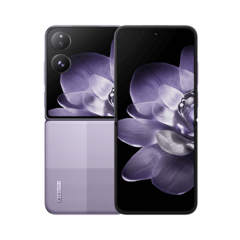











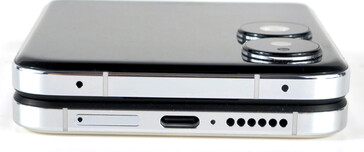




















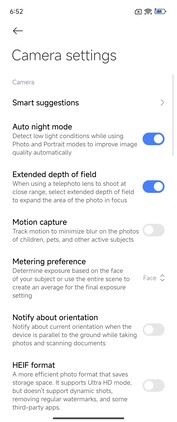


























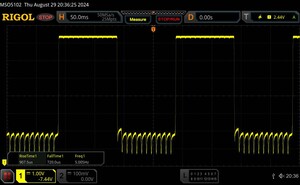








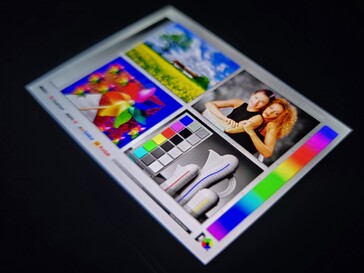







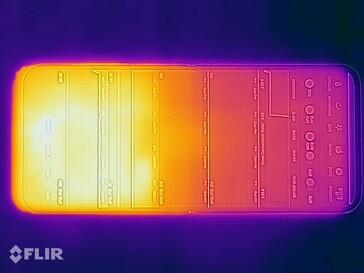


 Total Sustainability Score:
Total Sustainability Score: 


















